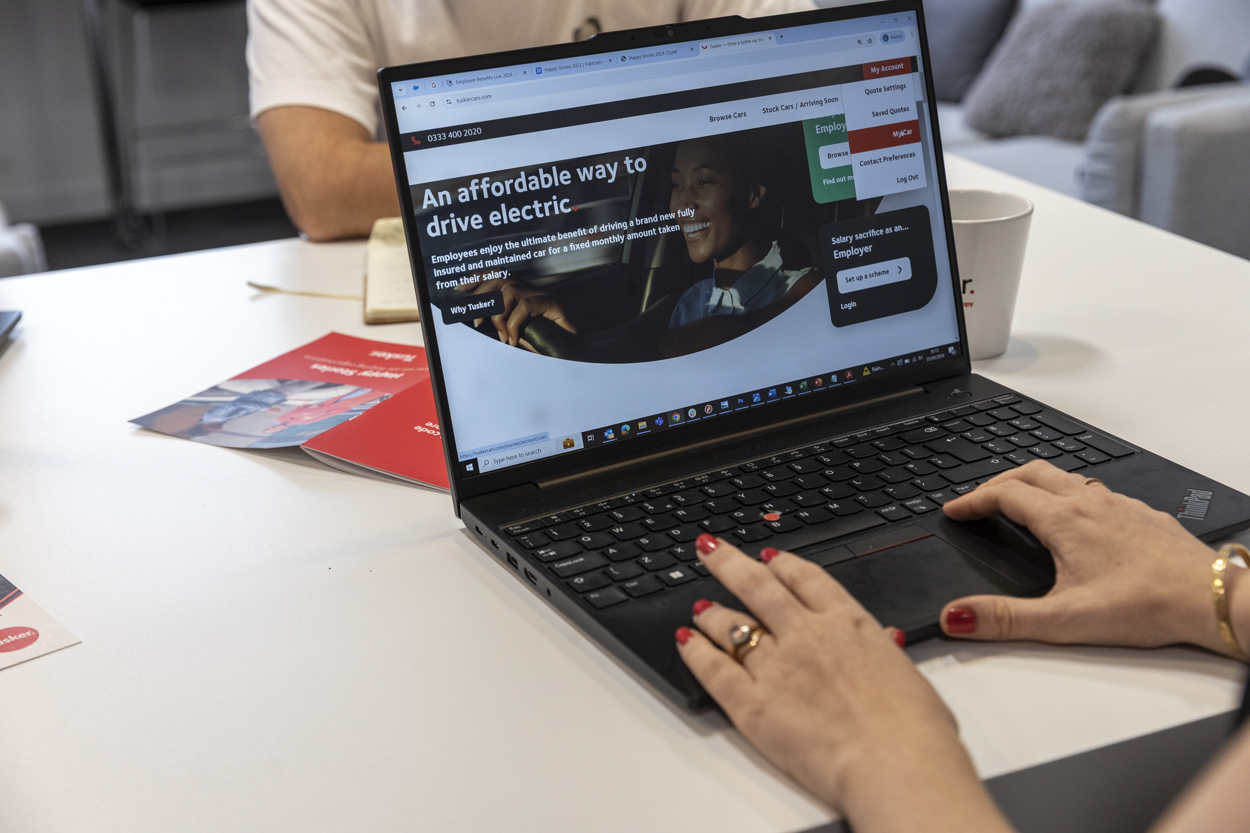How to communicate your benefits brilliantly

No matter how effective a benefit should be with your workforce, without a great communication strategy they can go unused. In fact, research has revealed that up to 42% of employees either don’t know about or understand their benefits. This presents a major Return on Investment (ROI) challenge for organisations that invest in benefits to attract, engage, and retain top talent – they won’t reap all of the advantages. Vitally, it doesn’t just limit employer ROI, it also impacts the success of employees, by restricting their access to tools that can enhance wellbeing.
To elevate your approach, employers need to create clear messaging, strategic planning, and consistent execution. Here’s our guide to employee benefits communication, to help you inform, engage, and inspire your workforce.
Take a strategic marketing approach

You wouldn’t launch a new product without a marketing strategy. Your employee benefits deserve the same level of planning. Treat employees as consumers, who require personalisation, clarity and consistent messaging.
A great place to begin is to align your approach with overarching organisational goals. Every communication should answer these critical questions:
What is the benefit, and why is it being offered?
- What actions should employees take if interested?
- What consequences will inaction have?
To do this effectively, your strategy should include:
Clear objectives. For example, it could be to increase uptake by 20%, reduce workload on HR from employee questioning, or improve awareness of a specific scheme.
- Defined audiences. Different generations, genders, and diversities with different lived experiences often require different messaging and communication channels.
- A clear timeline. Effective benefit communications are ongoing, not reactive.
- Success metrics. Measurement is crucial from the get-go to understand ROI, your employees’ needs, and improve your strategy.
By embedding greater clarity into your comms – supported by clear goals and regular measurement – you can turn your benefits strategy into something employees are able to engage and connect with.
Create a recognisable reward brand
 For your benefits to stand out, they need their own identity that feels connected to your organisation and is unique enough to attract attention.
For your benefits to stand out, they need their own identity that feels connected to your organisation and is unique enough to attract attention.
Ways this can be achieved include:
- Designing a dedicated logo or wordmark for your benefits platform.
- Using a unique colour design or background for benefit-related material.
- Adopting a consistent tone of voice and writing style, which is approachable, clear, and human.
The stronger your internal brand, the more recognisable and trustworthy your employee benefit communications will become. Whether it’s an email, an intranet banner, or a poster, your employees should be able to tell it’s something designed to reward and recognise them. This not only clarifies what’s available to them but also emphasises that you’re an employer who truly cares.
To simplify this process, many employers successfully adapt external brand frameworks and designs for internal use. Just make sure the tone feels more personal and less formal. Aim to foster a culture of consideration and trust, rather than appearing to be checking boxes for policy and compliance.
Know your audience, and speak their language
A critical reason many benefits communications fail are because they’re too generic. Employees require personalisation, just like they do as consumers. Your workforce is full of diversity, varied life stages, lifestyles, finances, lived experiences, and communication preferences. Your messaging needs to reflect this.
Start by segmenting your workforce. You might group people by:
- Age or career stage
- Job role or location
- Family status
- Digital access or confidence
- Gender and minority groups
 Then tailor your comms accordingly. For example:
Then tailor your comms accordingly. For example:
- Gen Z employees might respond better to short, visual content on mobile-friendly platforms.
- Parents may be interested in benefits like emergency childcare or health cash plans.
- Field-based employees may prefer printed materials or SMS updates over email.
Additionally, no matter your audience, avoid jargon. Use simple and direct language that makes your benefits accessible to all.
Bring your benefits to life
Most employees avoid complex policy documents or uninteresting bullet points. Instead, they connect with stories.
 Use employee case studies, testimonials, or quotes to show the real impact your benefits have had. For example:
Use employee case studies, testimonials, or quotes to show the real impact your benefits have had. For example:
- A colleague who saved money through a salary sacrifice benefit
- A team member who improved their mental health with counselling through EAPs
- A personal journey to sustainability through eco-friendly offerings
Ensure, however, that you have the employees’ permission to share their stories. In addition, provide visuals and explainer videos that further humanise your benefits and make them easier to understand. This is particularly helpful when discussing complex topics like pensions, insurance, or financial wellbeing, where employee confidence is often low.
Choose the right channels and repeat yourself
Don’t be afraid of repetition. It’s key to an effective communication strategy, with many employees being too busy, in and outside of work, to see or understand their benefits from singular communications. Use a combination of formats that reinforce your message and are likely to reach different audiences. This could include:
- Intranet updates and banners
- Email campaigns
- Posters in busy areas
- Videos
- Webinars or in-person info sessions
- SMS messages
- Line manager toolkits for team-level conversations
Aim to reiterate message using these channels year-round, not just during launches on enrolment windows. This will ensure your benefits are as inclusive and understandable as possible.

Measure, learn, and improve
Measurement is too often left behind in communication strategies, but it’s vital to understand ROI to continuously improve.
 Start by setting clear benchmarks: What do you want to improve, and by how much? Then monitor progress using data such as:
Start by setting clear benchmarks: What do you want to improve, and by how much? Then monitor progress using data such as:
- Programme participation or sign-up rates
- Email open and click-through rates
- Intranet traffic and engagement
- Attendance at events or webinars
- HR helpdesk queries
Also build qualitative feedback into your strategy:
- Short surveys about benefits awareness or satisfaction
- Focus groups to explore what’s working and what’s not
- Social media sentiment (on internal platforms like Teams)
- Questions within wider employee engagement surveys
It is critical to use this data to improve your messaging, understand which channels are most effective, and improve audience segmentation so that inclusion can be maximised.
Final thought
Employees want to work in an environment where they feel supported, recognised, and understood, with benefits becoming key to cultivating an attractive workplace culture that stands out to top talent. However, this only works if people understand what you offer and feel motivated to use it.
A smart, strategic communications approach makes this possible. At Tusker, we help you bring your employee benefits to life with a standout offering that appeals across all life stages and experiences, improved financial wellbeing, and a commitment to the environment through access to electric vehicles that align with your organisation’s sustainability goals.
Spark smiles across the business by bringing your employee benefits to life, today.